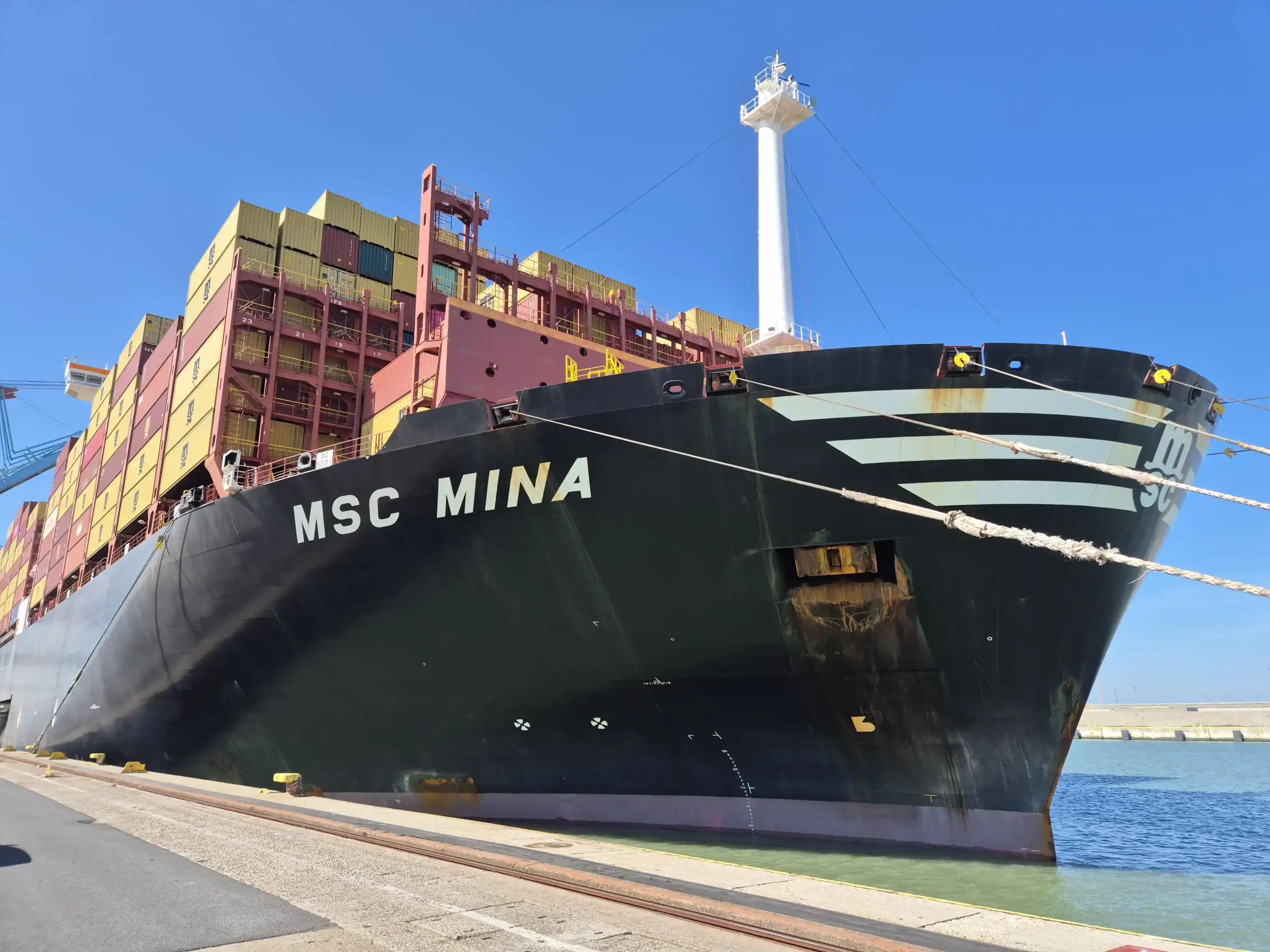The French shipping giant is strengthening its national registry with a new fleet of ultra-large container vessels. The decision carries major implications not only for maritime transport, but also for the entire logistics chain — including the rail hinterland.
CMA CGM, one of the world’s largest container shipping groups, has announced that ten newly ordered vessels with a capacity of 24,000 TEU will be registered under the French flag.
The move aligns with the company’s strategy to bolster France’s position as a maritime and logistics power in Western Europe.
The LNG-powered vessels are expected to enter service between 2026 and 2028, operating mainly on Asia–Europe routes. Sailing under the tricolour flag not only reflects national pride but also brings tangible consequences for ports, terminals, and rail transport networks.
Investment in the National Fleet and Seafarer Jobs
According to CMA CGM, all ten ultra-large container vessels (ULCVs) will be registered under the French International Register (RIF).
The decision will strengthen the participation of French crews in vessel operations and is expected to create around 135 maritime jobs on French contracts.
CMA CGM Chairman and CEO Rodolphe Saadé emphasized that this is “an act of loyalty to the French flag” and part of a broader plan to support the domestic maritime sector, which faces growing competition from low-cost registries.
“The CMA CGM fleet remains a source of pride for France and a driver of sustainable shipping. We choose the French flag because we believe in local expertise and social responsibility,”
said Saadé.
Technology for the Future: LNG and Biofuel Readiness
The new vessels — nearly 400 meters long and more than 61 meters wide — will rank among the largest container ships ever built. Each will carry approximately 24,212 TEU, including more than 2,200 reefer containers.
They will be equipped with dual-fuel LNG engines, ready for future conversion to biomethane or synthetic fuels. This technology will cut sulfur oxide emissions by 99%, nitrogen oxides by 92%, and particulate matter by 91% compared with conventional heavy fuel oil.
Construction is underway in Chinese shipyards, with deliveries scheduled between 2026 and 2028. The first vessel — the CMA CGM Notre Dame — is expected to be delivered in mid-2026.
Impact on French Ports and Logistics
Registering the ships under the French flag is not merely symbolic. For France’s key ports — particularly Le Havre — it represents a significant strengthening of their role on global trade routes.
The vessels will serve major Asia–Europe loops, including CMA CGM’s flagship French Asia Line (FAL1) service.
Handling ships of 24,000 TEU requires advanced terminal automation, deep-water berths, and efficient cargo distribution systems extending inland. This is where rail transport becomes increasingly crucial.
Rail — the Key to Efficient Port Hinterland Connections
Each call of a mega-container vessel involves thousands of containers that must be handled within a tight time window. Maintaining operational fluidity requires strong integration between ports, shipping lines, and inland transport operators.
The expected growth in cargo volumes at Le Havre and Marseille–Fos — along with partner ports — will drive higher demand for intermodal rail services.
For the rail sector, this creates new opportunities to develop strategic corridors linking France with Germany, Belgium, Italy, and Poland, provided that terminals can accommodate larger cargo flows and increased train frequencies.
The rise of low-emission, electric-powered rail freight fits perfectly into the broader decarbonization strategy pursued by both CMA CGM and the European Union.
Economic and Political Dimensions
Registering the new ships in France also has financial and symbolic implications.
Instead of opting for cheaper “flags of convenience” — such as those of Malta, Liberia, or Panama — CMA CGM chose to operate under the French registry, accepting higher operating costs in exchange for supporting the national economy and social security system.
The decision sends a strong message to the French government, which has long encouraged domestic shipping companies to increase the number of vessels under the national flag.
Currently, around 250 vessels are registered in the French International Register, and CMA CGM’s move will significantly boost that figure.
Implications for Central and Eastern Europe
For operators in Poland and Central Europe, the deployment of these mega-ships also carries practical consequences.
Larger vessels mean greater cargo volumes arriving at Western European ports, which will then be distributed deeper into the continent — including to Central and Eastern Europe.
Intermodal rail transport will become the natural extension of ocean shipping, connecting ports such as Le Havre, Rotterdam, and Antwerp with inland terminals in Poland, the Czech Republic, and Slovakia.
This trend creates new opportunities for rail operators and logistics centers in the region, particularly those capable of handling high-capacity, time-sensitive cargo flows.
A New Era for Shipping and Logistics
The introduction of ten 24,000-TEU vessels under the French flag marks another milestone in CMA CGM’s commitment to sustainable, high-capacity shipping.
It also highlights a broader transformation in global logistics — one where the future of shipping is defined not only by vessel size, but by integration across the entire transport ecosystem, from port to rail to final delivery.
For Europe’s logistics sector, this move signals the dawn of a new era of maritime–rail synergy, driven by efficiency, automation, and sustainability.



